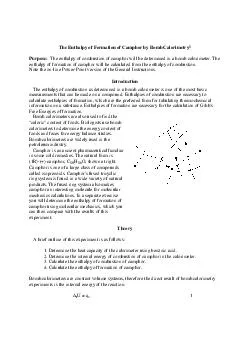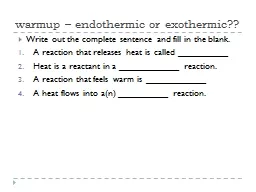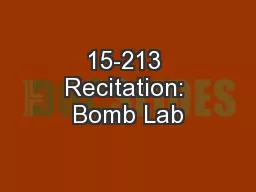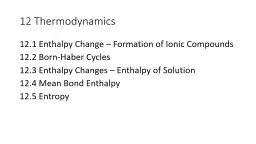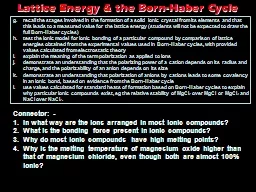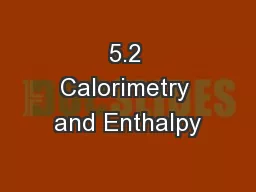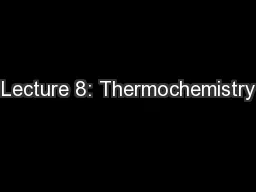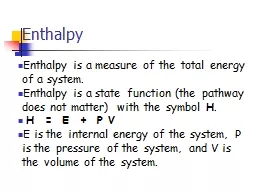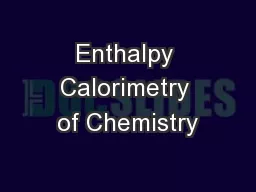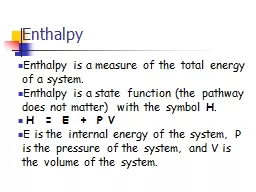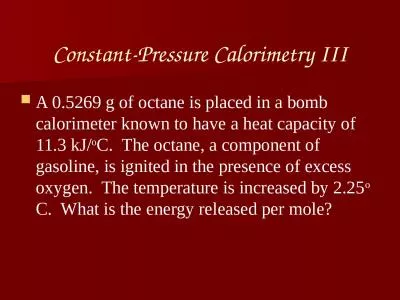PDF-The Enthalpy of Formation of Camphor by Bomb CalorimetryPurpose: The
Author : stefany-barnette | Published Date : 2016-12-05
in some cold remedies The natural form is 1Rcamphor C1016O shown at right Camphor is one of a large class of compounds called isoprenoids Camphors fused tricyclic
Presentation Embed Code
Download Presentation
Download Presentation The PPT/PDF document "The Enthalpy of Formation of Camphor by ..." is the property of its rightful owner. Permission is granted to download and print the materials on this website for personal, non-commercial use only, and to display it on your personal computer provided you do not modify the materials and that you retain all copyright notices contained in the materials. By downloading content from our website, you accept the terms of this agreement.
The Enthalpy of Formation of Camphor by Bomb CalorimetryPurpose: The: Transcript
Download Rules Of Document
"The Enthalpy of Formation of Camphor by Bomb CalorimetryPurpose: The"The content belongs to its owner. You may download and print it for personal use, without modification, and keep all copyright notices. By downloading, you agree to these terms.
Related Documents

